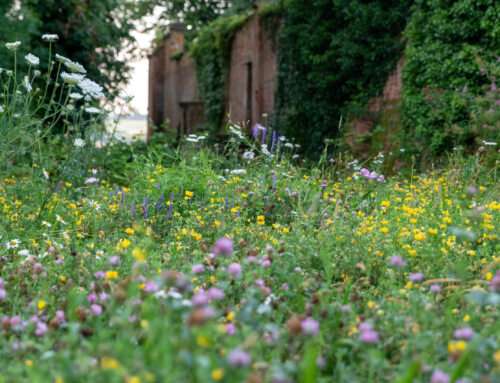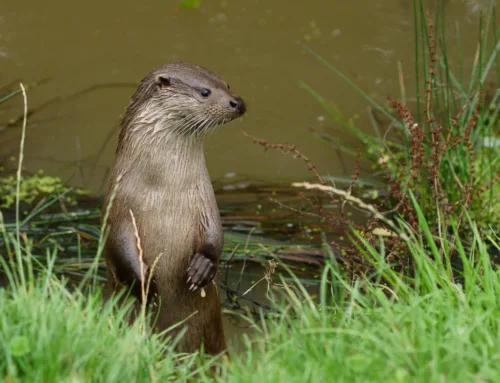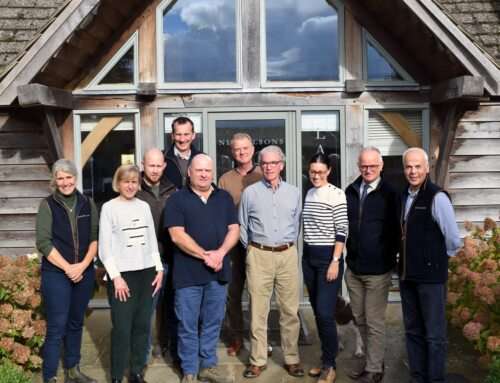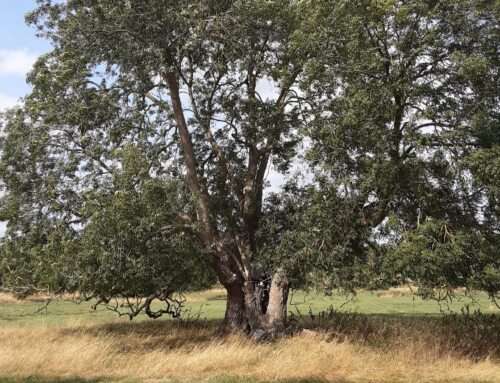Protecting one of the UK’s Smallest and Rarest Mammal Species
The hazel dormouse, Muscardinus avellanarius, is one of the UK’s smallest and rarest protected mammal species. With its sleepy nature and fluffy, golden-brown fur, the hazel dormouse is undoubtedly one of our most adorable resident species. Beatrix Potter once kept one as a pet, naming her Xarifa, and wrote in her journal, “I think she was in many respects the sweetest little animal I ever knew”.
The body of the hazel dormouse is covered in soft golden-brown fur and is 6-9cm long with an equally long tail. The dormouse is the only small British mammal to also have fur on their tail. They have relatively large black eyes and long whiskers. Over the summer months, adults weigh on average around 20g but just before hibernation in winter and after they have feasted, they can weigh between 30g-40g. This is to ensure that they have the capacity to lose a certain level of body weight during hibernation.
Spotting a hazel dormouse is difficult – this species is nocturnal and renowned for being difficult to find due to their dwindling population. If you are lucky enough to spot one, they can be found amongst hedgerows foraging for hazelnuts and other food types or asleep in hollow tree branches and empty bird nests. To shelter from predators, these mammals very rarely come to the ground.

By Charlotte Quigley, Assistant Ecological Consultant
Not only elusive, the hazel dormouse is extremely rare. Their population in the UK has fallen by over 50% in the last 30 years. In the UK and Europe, the hazel dormouse is classified as vulnerable to extinction and is fully protected by law. It is a crime to touch, disturb, injure or kill dormice in their nests or collect, trap or sell them without a licence.
The hazel dormouse used to be widespread in Britain but their distribution has declined significantly and they now live predominantly in Southern England and Wales. Their principal requirement is for a diverse habitat featuring several different tree and shrub species to provide food throughout the summer. The loss and fragmentation of ancient woodlands, climatic difficulties and suspension of coppicing are all factors which have caused their population decline.
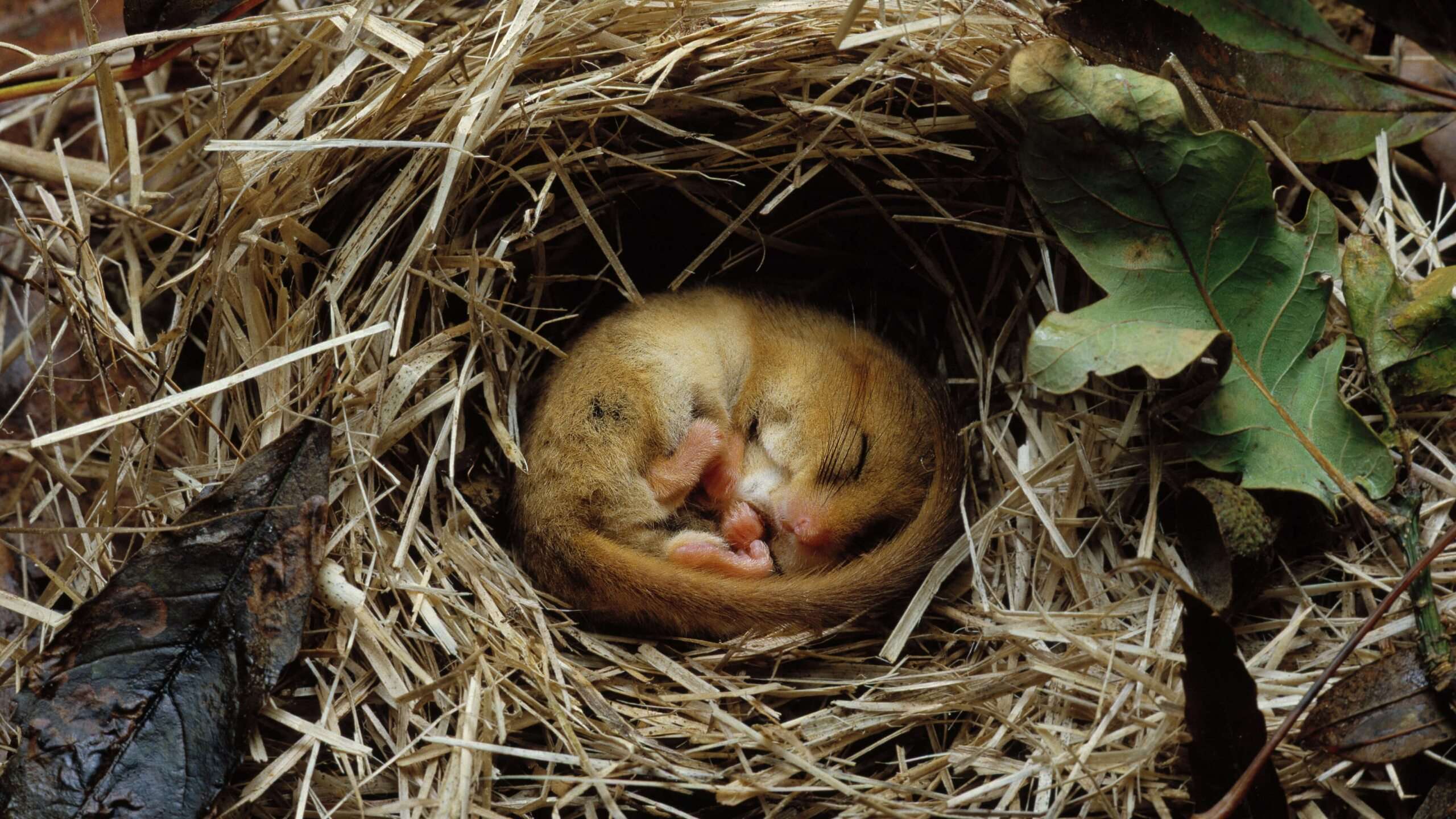

It is important to hire a qualified ecologist to complete a habitat suitability check on your site if you suspect the presence of dormice or know them to be confirmed already. If you cannot avoid certain works, it is essential to apply for a mitigation licence from Natural England to ensure safe practice and no disruption or harm to this species.
When hazel dormice are active, they rely on good tree and shrub diversity to provide them with food. They lack a caecum in their gut which means they are not well-adapted to digest cellulose in leaves. Instead, they are known as successional feeders, foraging on a wide range of foods as and when they become available. Bramble is a particularly valuable plant to the hazel dormouse as it has both a long flowering and fruiting season. In the spring, dormice feed on food types such as hawthorn flowers and willow catkins but move to later flowering plants in the summer such as honeysuckle, bramble and readily available invertebrates like caterpillars and aphids. In the autumn, hazel dormice feast on fruits and berries such as blackberries and hazelnuts to increase bodyweight leading into hibernation.
Hazel dormice can spend as much as three-quarters of the year “asleep”. Hibernation is the strategy hazel dormice use for coping with a lack of food over winter. During this state, all vital functions are reduced to a minimum. Their hibernation is interrupted with periodic arousals, for example expelling metabolic waste products. They hibernate on the ground where temperatures and conditions are more stable. They seal themselves into small nests under log piles, tree base stumps, in soil depressions and under leaf litter. Hibernation usually comes to an end in April and May.


Outside of winter, if food is scarce or weather prevents them from foraging, the hazel dormouse can lower its body temperature and reduce its metabolic rate, becoming torpid to save energy. In May, over 50% of dormice found in nesting tubes by ecologists during surveys are in a torpid state. It is this sleepy nature that has given the dormouse its name, deriving from the French word “dormir”, meaning to sleep.
Hazel dormice are very sensitive to changes in their habitat and the climate. This means that this species is an excellent indicator of the health of woodlands and hedgerows. A decline in dormice is a warning sign – we can use population statistics as an indicator to measure the success of landscape conservation measures.
The People’s Trust for Endangered Species has a reintroduction programme and monitoring scheme that helps to recover dormice numbers. If you would like to make a one-time or monthly donation, please click here; if you donate monthly, you will receive news on how your donation benefits the species and what conservation work is being carried out with PTES.
If you suspect dormice may be on your property and have any development plans which are likely to affect areas of woodland, scrub or linked hedgerows, a dormouse survey will be required to establish their presence or absence. Please email our ecology department at contact@nicholsonsgb.com or by phone Northamptonshire: 01536 408840 / Oxfordshire: 01869 340342.
Sources:
BBC Countryfile
Peoples Trust for Endangered Species
Saving Britain’s Wildlife
Woodland Trust

